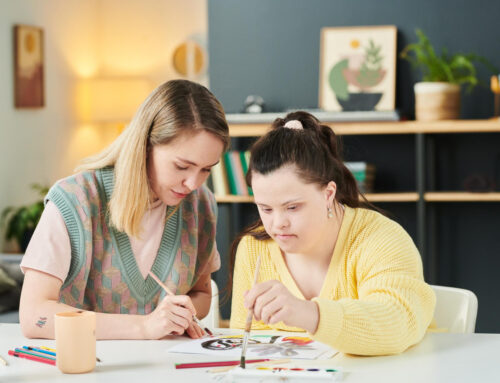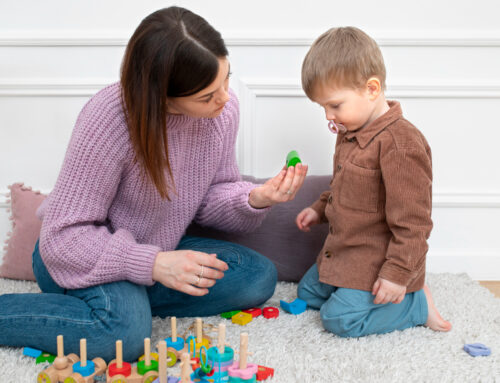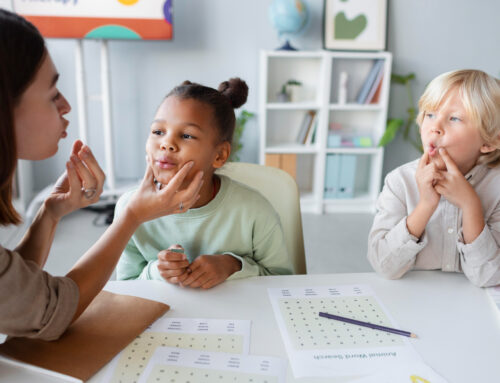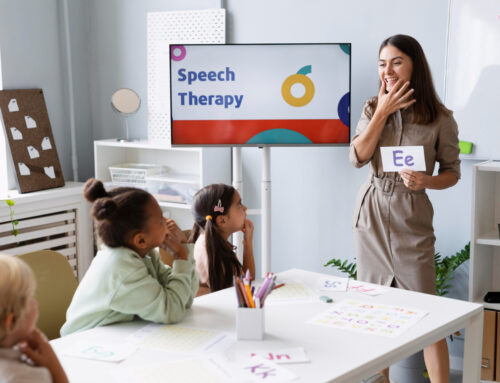
There are so many “teaching moments” that can happen when you include your kids in the kitchen, whether they are typical or have special needs. Helping in the kitchen lends itself to learning vocabulary, sequencing, and life skills. With my own twin sons who have special needs, I have found it easier to work on home program activities when they coincided with activities that were already happening in my home. Here are some easy ideas to include your child in the kitchen that can help support speech, language, and other therapy and life skills goals.
Easy:
- Help you grease a pan. This can be a great sensory activity. Most recipes that call for this use shortening or butter. If it calls for butter and your child is on a casein free diet, you can use a vegan butter substitute.
- Give them a wooden spoon, a few bowls and plastic measuring cups to play with, (“cook with”) while you are doing your own cooking. This encourages representational play skills.
- Hand over hand pouring in ingredients into the mixing bowl. Name the items as you pour them in to help vocabulary grow.
- Hand over hand stirring. You can add counting the “stirs” to help your child learn counting/number sequence.
- Lick the beaters! Licking the beaters (unattached, of course) is a great way to improve tongue strength and range of motion; a fun flavorful oral motor activity!
Moderate:
- Practice sequencing…“First we put in the milk, then we stir”. Start with two steps then build from there!
- Is your child reading already? Then make flashcards of “Bake, Mix, Cook”, and other cooking or kitchen themed words.
- Separating the muffin/cupcake liners and putting them in the muffin pan. This is a great fine motor activity.
- Help you fold and/or put away the small kitchen linens: dishcloths and dishtowels. The square shape and smaller size of dishcloths make them a great first laundry item to learn to fold.
- Help you pat down the dough when making homemade pizza. This is another great sensory activity. There are many gluten free options now!
Higher:
- Using a melon-baller or spoon to drop cookie dough onto the pan. This is a great way to bring in “smaller/bigger” or “more/less” as needed, and using the melon baller or an ice cream scoop for this activity helps build fine motor skills and hand strength.
- Make a simple drink mix. This usually involves only 3 steps and is a great first kitchen task to “make” something independently. Based on your child’s age, you may want to hold the pitcher as the water goes in.
- Follow a simple 3-5 step no-cook recipe with your supervision. This is great for sequencing and learning to follow steps to complete a task. If your child is not reading, they can follow picture recipes. A favorite of my boys is to make a no-bake pie.
- Breaking the eggs. Have them break them into a separate dish; this way it is easy to get out any shells that fall in while they are learning.
- Review kitchen safety. (Explain why we use potholders. Explain that steam is hot and can burn you the same as fire. Explain your home’s rules on when they can/can’t use microwave/oven, or go over rule that they are never allowed to.
There are so many teachable moments that happen in the kitchen but the best part is the memories you make with your children when you take the time to include them. A lot of character can happen in the kitchen as well. One of my favorite books to read with my kids that are cooking and character related is Sugar Cookies: Sweet Little Lessons on Love by Amy Krouse Rosenthal. This is a favorite to read in my house when we are making cookies; especially at Christmastime and Valentine’s Day. Another favorite book is How to Make an Apple Pie and See the World by Marjorie Priceman. You can also check out Teachers Pay Teachers for more great kitchen themed packets for children of all ability levels!

 Katie Sullivan, M.S., SLP-CCC has been a pediatric Speech Language Pathologist for 22 years, and is a Therapy Supervisor with Theracare. She is the mother to five children, ages 7-17, including twin teenage sons with special needs. You can follow her at the My Sweet Homeschool blog, facebook, twitter, and instagram.
Katie Sullivan, M.S., SLP-CCC has been a pediatric Speech Language Pathologist for 22 years, and is a Therapy Supervisor with Theracare. She is the mother to five children, ages 7-17, including twin teenage sons with special needs. You can follow her at the My Sweet Homeschool blog, facebook, twitter, and instagram.





